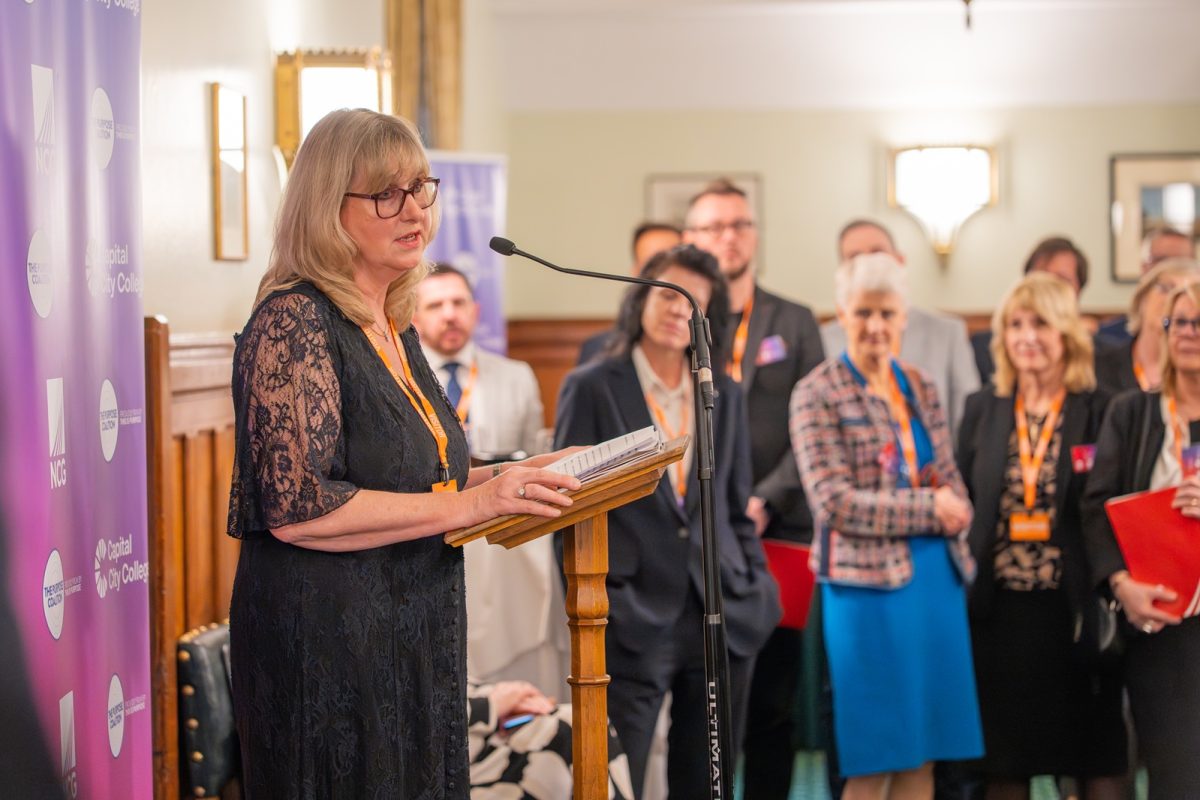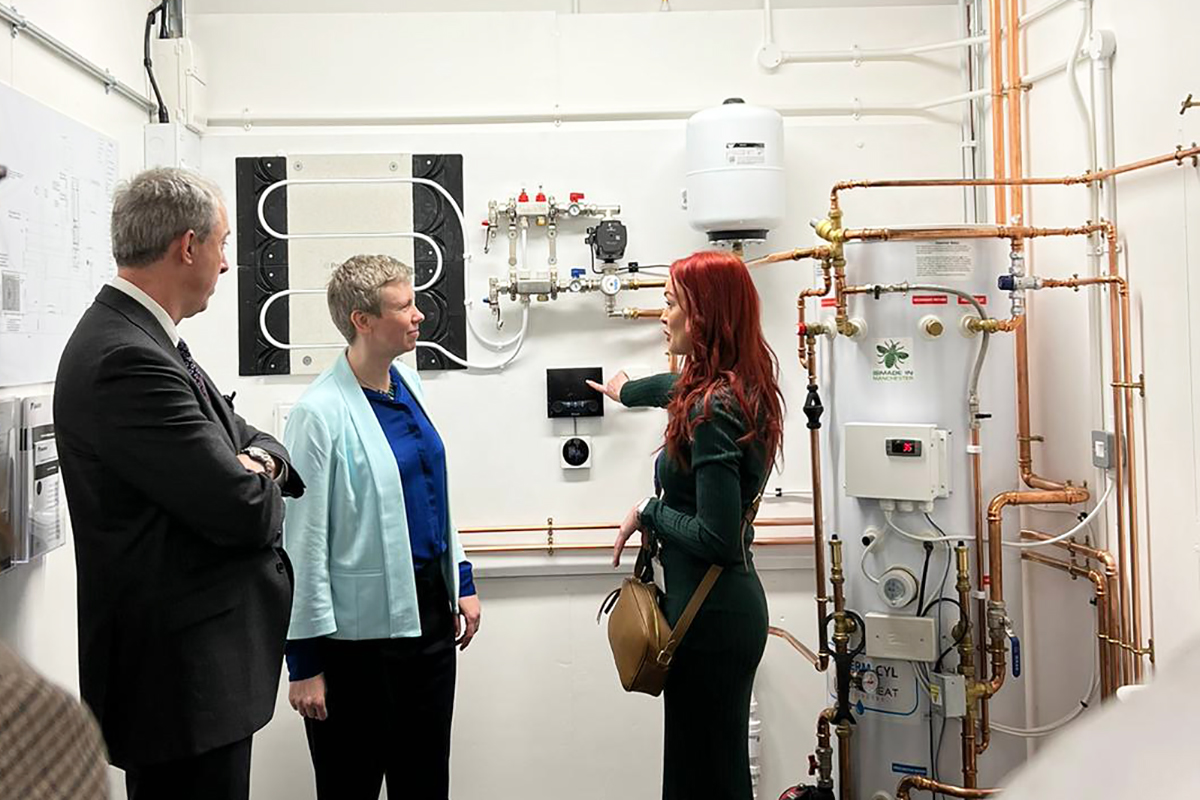Apprenticeship reform programme: benefits realisation strategy

@EducationGovUK sets out aims for #apprenticeship reform and how this will benefit employers and apprentices
The Apprenticeship Reform Programme was established in May 2015, with quality at its heart. We committed to a number of fundamental reforms that would overhaul England’s apprenticeship system in line with best international practice, put employers in the driving seat, and build the skilled workforce this country needs for its future. We aimed to complete these structural reforms by 2020.
At this key point in our reform process, this report both reviews our progress towards these measures as this five-year transformation period comes to an end, and reflects on our future development as we move forwards.
Since 2015, we have transformed the apprenticeships landscape, with notable highlights including the introduction of degree apprenticeships in 2015, the apprenticeship levy in 2017, the introduction of the independent End-Point Assessments (EPAs) and the continual development of new employer-designed standards to replace the old frameworks system, which will soon be phased out.
Digital apprenticeship service
In February 2017 we launched our award-winning digital apprenticeship service for levy-paying employers; in January 2020 we entered the first transition of opening the service to smaller employers who do not pay the levy. By March 2021 we expect this transition to be complete and for all new apprentice starts to be funded via the Apprenticeship Service.
In April 2019, we changed our rate of co-investment from 10% to 5% so that smaller employers have even greater financial support accessing apprenticeships. We also increased the amount a levypaying employer can transfer from 10% to 25% to provide even greater flexibility for businesses to spend their funds and support smaller employers in their supply chain to provide high-quality apprenticeship training.
T Levels
We have instituted an ambitious programme to modernise technical education and match best international practice. As part of these wider reforms to technical education and the Further Education landscape, we have created T Levels—a new gold standard technical qualification so that young people gain the skills they need for employment—and these will launch this Autumn.
T Levels are a high-quality technical alternative to A Levels, combining classroom theory, practical learning and a meaningful industry placement. T Levels follow the same occupational standards as apprenticeships, designed by employers and approved by the Institute for Apprenticeships and Technical Education. Both T Levels and the apprenticeship reforms mean that there are multiple ways for young people to secure the skills the country’s workforce demands.
The next phase of the Apprenticeship Programme
Thanks to our reforms, apprenticeships are now longer, higher quality, with more off-the-job training and have a rigorous assessment at the end, ensuring that all apprentices are fully occupationally competent. They give people of all ages and backgrounds the chance to gain the skills to make a difference.
As we move into the next phase of the Apprenticeship Programme, we are reviewing how best to use the vast potential of apprenticeships. We are developing our new business case and using this as an opportunity to reassess and re-baseline our benefits, taking advantage of new technologies and infrastructure that were not available to us in 2015.
We now have the opportunity to ensure that, going forwards, we are setting targets that will maintain quality, secure value for money, and guarantee apprenticeships remain a prestigious route to creating a skilled workforce for the future.
Apprenticeship Starts
The government set itself the target of generating 3 million high quality apprenticeship starts in England between 2015 and 2020. This report updates Parliament on progress towards that target. Since the apprenticeship reforms began in May 2015, there have so far been 2,087,300 starts on apprenticeships. This figure is 69.6% of the 3 million target.
More importantly, this figure represents 2,087,300 people choosing to enter a training scheme that helps them progress in their chosen careers and provides valuable skills to the country’s workforce.
Our transformational reforms mean that the starts now made on the apprenticeship programme are indeed high-quality starts.
Widening Participation and Horizons
Apprenticeships can be an engine for social mobility. They can benefit people from all backgrounds at all levels of learning. They offer a unique opportunity to earn and learn, build confidence and skills, and strengthen the workforce right from the start. Consequently, the government has committed to widening participation in apprenticeships by increasing the proportion of starts from priority, under-represented groups, ensuring that everyone can access and benefit from these opportunities.
Increasing the volume of starts from certain groups across the country begins the process of widening participation but that must be supported by a successful rate of achievement. Consequently, the Benefits Realisation Strategy set the targets of increasing the rate of achievements for minority groups and of maintaining the rate of achievement across the programme as a whole.
We are deeply committed to supporting our learners and have undertaken research into reasons for non-completion and the challenges apprentices may face.
Public Sector Apprenticeships
Apprenticeships strengthen the workplace. We believe the public sector should lead the way by using apprenticeships to deliver ever better public services, and that the benefits of apprenticeships must be considered regularly in public sector future workforce planning. In order to further this vision, government introduced the public sector apprenticeship target, which came into effect from 1 April 2017.
In government we are working hard to increase Apprenticeships, which are core to our ambition to become a brilliant Civil Service. Not only do they support our commitment to building a broader set of skills in the Civil Service, but they allow us to offer more varied careers that will help us retain and attract the best talent, ultimately providing a better public service.
Future Steps
This report is based on the reporting year 2018/19 and was prepared prior to the Covid 19 outbreak.
We have yet to determine the full impact of this unprecedented event and our actions going forward will need to be undertaken within this context. In the past five years the apprenticeships landscape has altered dramatically, and it will continue to do so.
New technologies are emerging, and with them new opportunities that were not available to us when we embarked on the reform programme. Infrastructure changes mean that we now have different options available for data collection and analysis; market demographic changes require a refreshed approach.
We believe we must maximise these opportunities as we move into the next cycle of the programme, ensuring our next set of benefits are effective, streamlined, and ambitious as we address the new landscape. Moving forwards, we will continue our drive to deliver high quality, relevant apprenticeships, that deliver the skills this country needs, for people of all backgrounds. We expect to publish a further update in 2021.
Documents in Full:
Progress report on the apprenticeships reform programme 2020
Ref: ISBN 978-1-5286-1863-2PDF, 334KB, 25 pages
Progress report on the apprenticeships reform programme 2019
Ref: ISBN 978-1-5286-1211-1PDF, 460KB, 19 pages
Progress report on the apprenticeships reform programme 2018
PDF, 321KB, 15 pages
Apprenticeship reform programme: benefits realisation strategy
Ref: DFE-00115-2017PDF, 1.18MB, 27 pages
Apprenticeship reform programme: benefits realisation report, February 2018 to May 2018
PDF, 129KB, 3 pages
Apprenticeship reform programme: benefits realisation report, October 2017 to January 2018
PDF, 129KB, 3 pages
Apprenticeship reform programme: benefits realisation report, July to September 2017
PDF, 128KB, 3 pages
Apprenticeship reform programme: benefits realisation report, April to June 2017
PDF, 76.5KB, 3 pages
Details
This strategy outlines a range of high-level indicators of success for the programme, measured in positive results for participants.
The benefits realisation reports provide a summary of the progress in achieving the growth targets set out in the strategy, taken from the published statistical data sets.
Published 30 March 2017
Last updated 6 May 2020 + show all updates
-
Added ‘Progress report on the apprenticeships reform programme 2020’.
-
Added document ‘Progress report on the apprenticeships reform programme 2019’.
-
Added the ‘Progress report on the apprenticeships reform programme’.
-
Added benefit realisation report covering February 2018 to May 2018.
-
Added benefit realisation report covering October 2017 to January 2018.
-
Added a December 2017 benefits realisation report update.
-
Added benefits realisation update document.
-
First published.











Responses